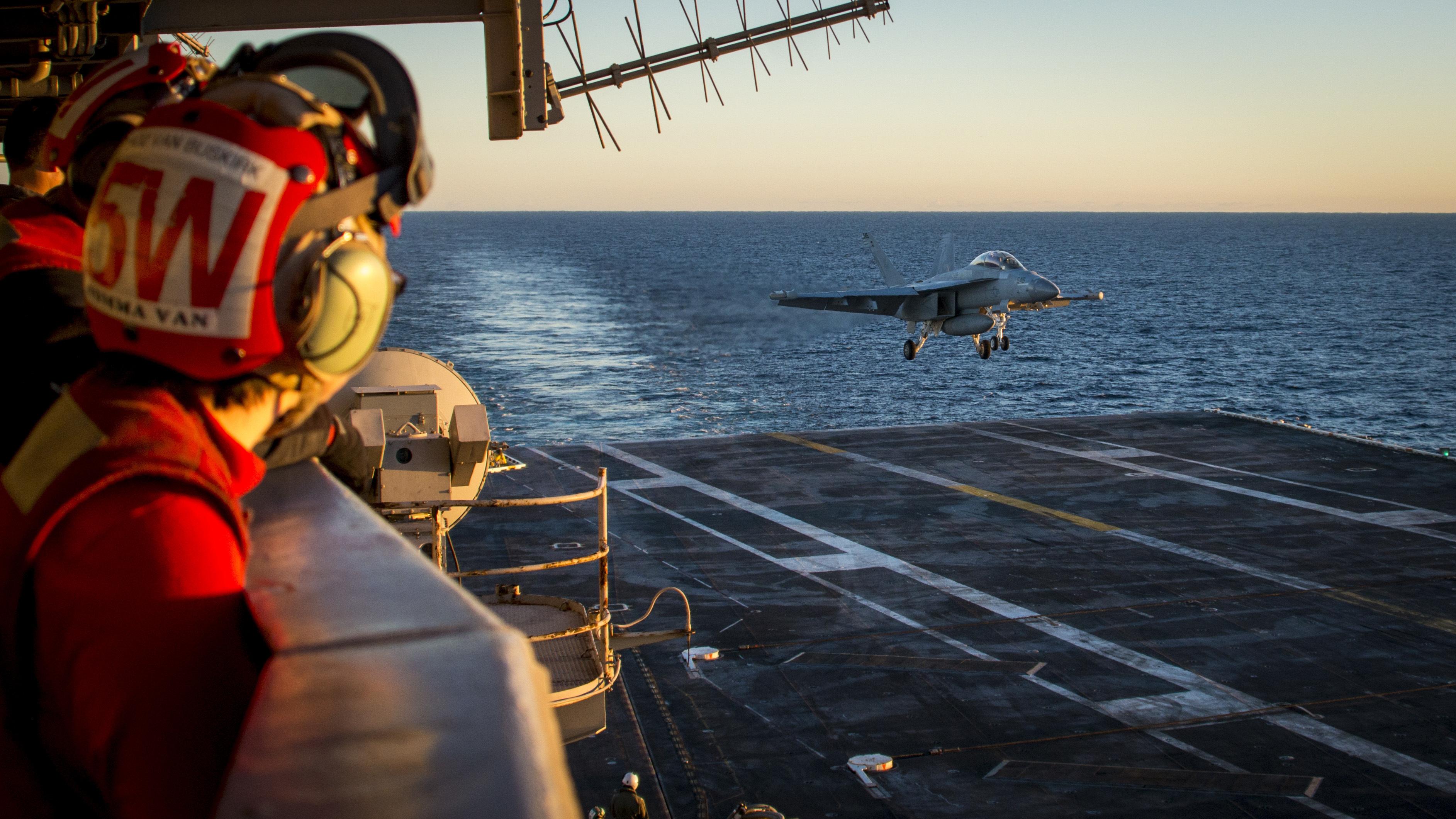USS Carl Vinson (CVN 70) received the first production unit of the Joint Precision Approach and Landing System (JPALS) in April, nearly a month ahead of schedule.
Follow Navy Recognition on Google News at this link
 An EA-18G lands aboard USS Carl Vinson (CVN 70) during flight operations in the Pacific in 2018 (Picture source: U.S. Navy)
An EA-18G lands aboard USS Carl Vinson (CVN 70) during flight operations in the Pacific in 2018 (Picture source: U.S. Navy)
This is the first of 23 JPALS initial low-rate initial production (LRIP) units delivering through fall 2023. The Navy awarded Raytheon a $234 million contract in May 2019 for 23 JPALS units to outfit the Navy’s nuclear-powered aircraft carriers and amphibious assault ships.
“JPALS provides the next generation of shipboard precision landing capability to ensure our warfighters can operate safely anywhere in the world, regardless of sea state or weather conditions,” said Capt Kevin Watkins, Naval Air Traffic Management Systems (PMA-213) program manager. “JPALS not only contributes to the safety and mission success of our aviators, but it will also provide the precision capability required to safely land the MQ-25 unmanned carrier-based aircraft on ships at sea in the future.”
JPALS is a GPS-based landing system that integrates with shipboard air traffic control and landing system architectures to guide fixed-wing aircraft and helicopters with pinpoint approach and landings on carriers and amphibious assault ships in all weather and surface conditions. It also features anti-jam protection for operating in electronic warfare environments.
CVN 70 JPALS installation and system operational verification test is scheduled to be completed in June.
JPALS development and demonstration began in 2008 with the first JPALS aircraft carrier landing in 2013 aboard USS Theodore Roosevelt (CVN 71); to date, five JPALS engineering and development models have been installed and tested on carriers and amphibious assault ships. JPALS initial operating capability is scheduled for 2024 and full-operational capability is scheduled for 2030.



